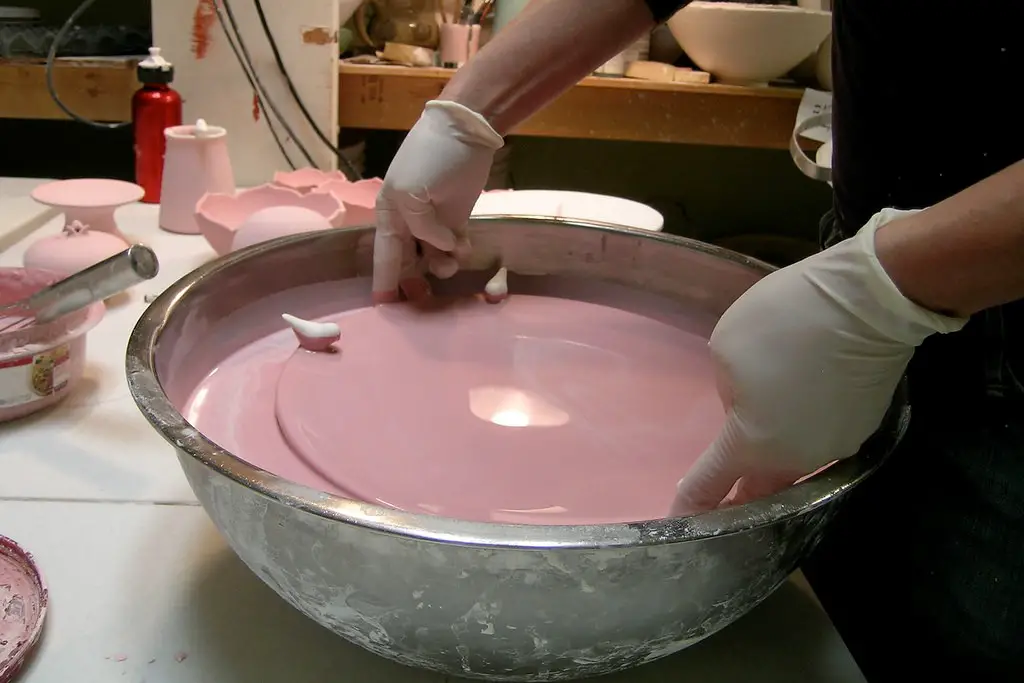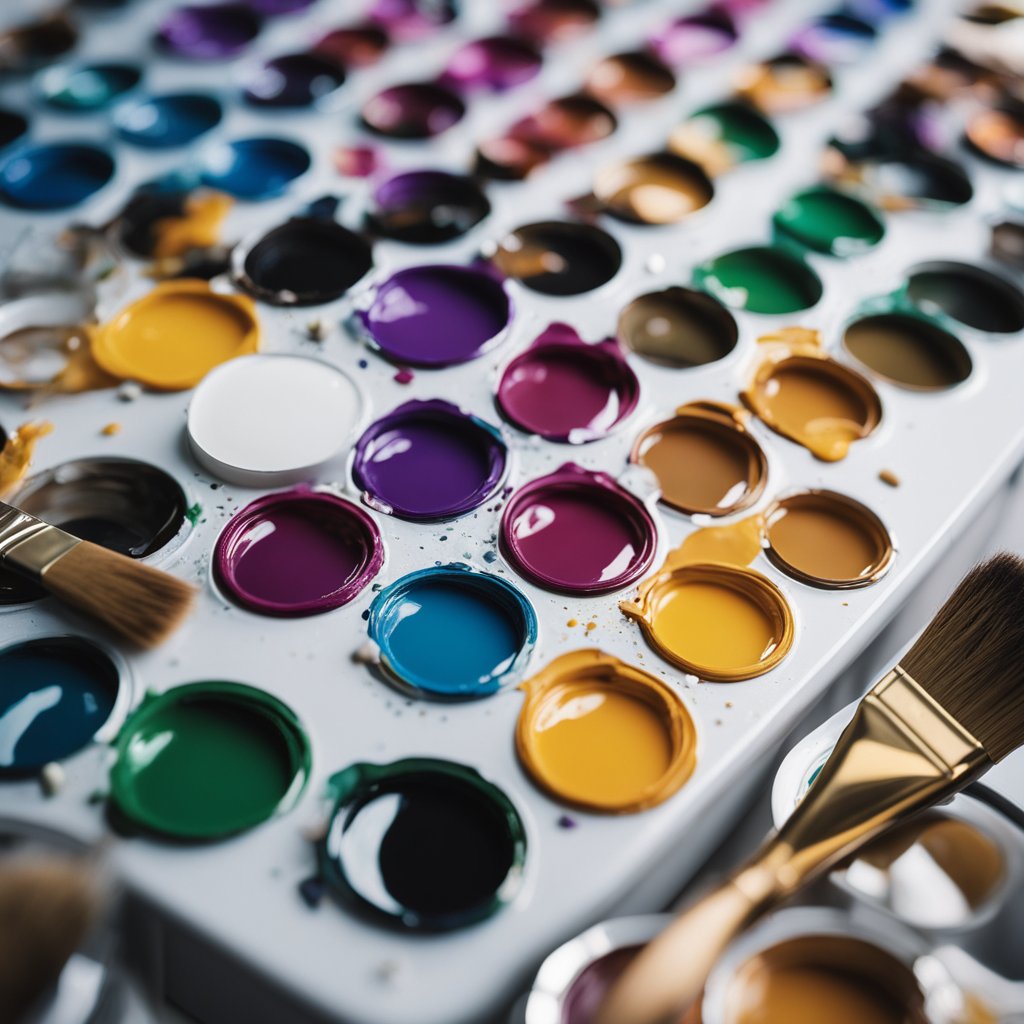Pottery glazing is a complex, nuanced, and outstanding balance of various components that bring a perfect finished piece. You can be a seasoned artist or a beginner in pottery, but a deep understanding of glaze mixing complexities will stay important. It is so you can create both functional and beautiful pieces. This comprehensive guide will help you know if you have mixed your glaze correctly by providing insight into what glazes are made of, what an improper glaze is like, and how you can move on to make the right mix.
Understanding Glaze Composition
Glaze composition is the most important information one should realize if they are to make the right mix. Here is a table that encompasses all the components of a glaze along with the role they play:
| Components | Characteristics |
| Silica | It provides structure and hardness to the glaze. |
| Flux | It lowers the melting point of the glaze. |
| Alumina | It adds stability and opacity to the glaze. |
| Colorants | They impart color to the glaze. |
| Opacifiers | They increase the opacity of the glaze. |
| Stabilizers | They prevent the glaze from settling or separating. |
It shows that various components create the right glaze. While these components may not always be present due to our intervention, it is always right to choose a glaze with all of these to find the correct mix.
What is the Importance of Balance in Your Glaze Mix?
Balancing the components in a glaze mix is essential to have the perfect consistency and the right results. Every element is crucial; thus, ensuring their presence will help with smoother application and firing. An improper balance of these components can lead to uneven coverage, color variations, and glaze defects.
A balanced mix will help you fulfill your aesthetic goals better without compromising your piece’s functional properties. The Sax 229173 True Flow Gloss Glaze is a beginner-friendly and balanced option that can be used to make suitable mixes for your pottery.
Warning Signs of an Improperly Mixed Glaze
If your glaze is not mixed correctly, it will give off problematic signs. Here are some common signs of an improperly mixed glaze:
- Uneven Consistency
One of the most evident signs of an improperly mixed glaze is uneven consistency, characterized by visible clumps or lumps throughout the mixture. This inconsistency can result in irregular coverage and undesirable textures in the finished pottery, detracting from its overall quality and aesthetic appeal. The uneven consistency indicates inadequate mixing or improper dispersion of glaze components, necessitating corrective measures to achieve a smooth and uniform glaze surface.
- Settling or Separating Materials
Over time, glaze materials may settle or separate if the mixture is not adequately homogenized. It can lead to variations in the concentration of components, affecting the glaze’s performance and appearance and ultimately compromising the integrity of the finished piece. Settling or separating materials in the glaze mixture indicates inadequate suspension or stabilization of glaze components, necessitating thorough mixing and agitation to restore homogeneity and uniformity.
- Lack of Desired Color
Inadequate mixing of glaze components can result in a lack of desired color intensity or variation. Proper dispersion of colorants is crucial for achieving consistent and vibrant hues in the finished piece, ensuring that the artist’s vision is realized in their pottery. The color variations or inconsistencies in the glaze surface indicate inadequate dispersion or incorporation of colorants, necessitating adjustments to achieve the desired color and appearance in the finished pottery.
- Glaze Defects After Firing
Improperly mixed glazes may manifest defects such as pinholes, crawling, or blistering after firing. These flaws detract from the aesthetic appeal of the pottery and indicate underlying issues with the glaze mixture, necessitating corrective measures to prevent recurrence in future batches. The presence of glaze defects indicates inadequate mixing, application, or firing conditions, necessitating thorough analysis and troubleshooting to identify and address the root cause of the issue.
Guide to Making the Right Glaze Mix

Now that you know what makes the right mix of glaze and what happens when it is not mixed well, you can learn to make the correct mix yourself. Here is what you should know:
- Addressing Clumps or Lumps
Achieving a smooth and uniform consistency is vital in glaze mixing. To address clumps or lumps in the glaze mixture, thorough sieving or straining is essential to remove particulate matter and ensure a homogeneous blend of ingredients. Incorporating mechanical agitation or dispersion aids can also facilitate the breakdown of clumps and lumps, resulting in a smooth and uniform glaze surface.
- Correcting Separating Material
Remixing the mixture thoroughly is imperative to restore its homogeneity if glaze materials have settled or separated. Agitating the glaze and reincorporating any settled materials into the mixture will ensure consistent performance and desirable outcomes in the finished pottery. Incorporating stabilizers or suspension aids can also help prevent the settling or separation of glaze materials, ensuring long-term stability and uniformity in the glaze mixture.
- Adjusting Viscosity
The viscosity of the glaze plays a pivotal role in its application and coverage, necessitating adjustments to achieve the desired effect. Adding water or thickening agents enables artists to fine-tune the glaze’s viscosity, ensuring optimal application and adherence to the pottery surface. Incorporating viscosity modifiers or flow enhancers can also help achieve desired flow properties and surface finishes in the glaze, ensuring consistent and uniform coverage in the finished pottery.
- Troubleshooting After Firing
Even with meticulous mixing, glaze defects may still occur after firing, requiring diligent troubleshooting to identify and address the root cause. Whether inadequate mixing, improper application, or firing conditions, thorough analysis enables artists to make informed adjustments and prevent recurrence in future batches. Incorporating process controls or quality assurance measures can also help identify and mitigate potential issues during glaze mixing, ensuring consistent and high-quality results in the finished pottery.
Conclusion
Properly mixing glaze is a foundational aspect of pottery-making that significantly impacts the outcome of the artwork. By understanding the glaze composition, recognizing warning signs of improper mixing, and employing corrective measures, ceramic artists can ensure consistent and high-quality results in their pottery work.
Happy sculpting!







